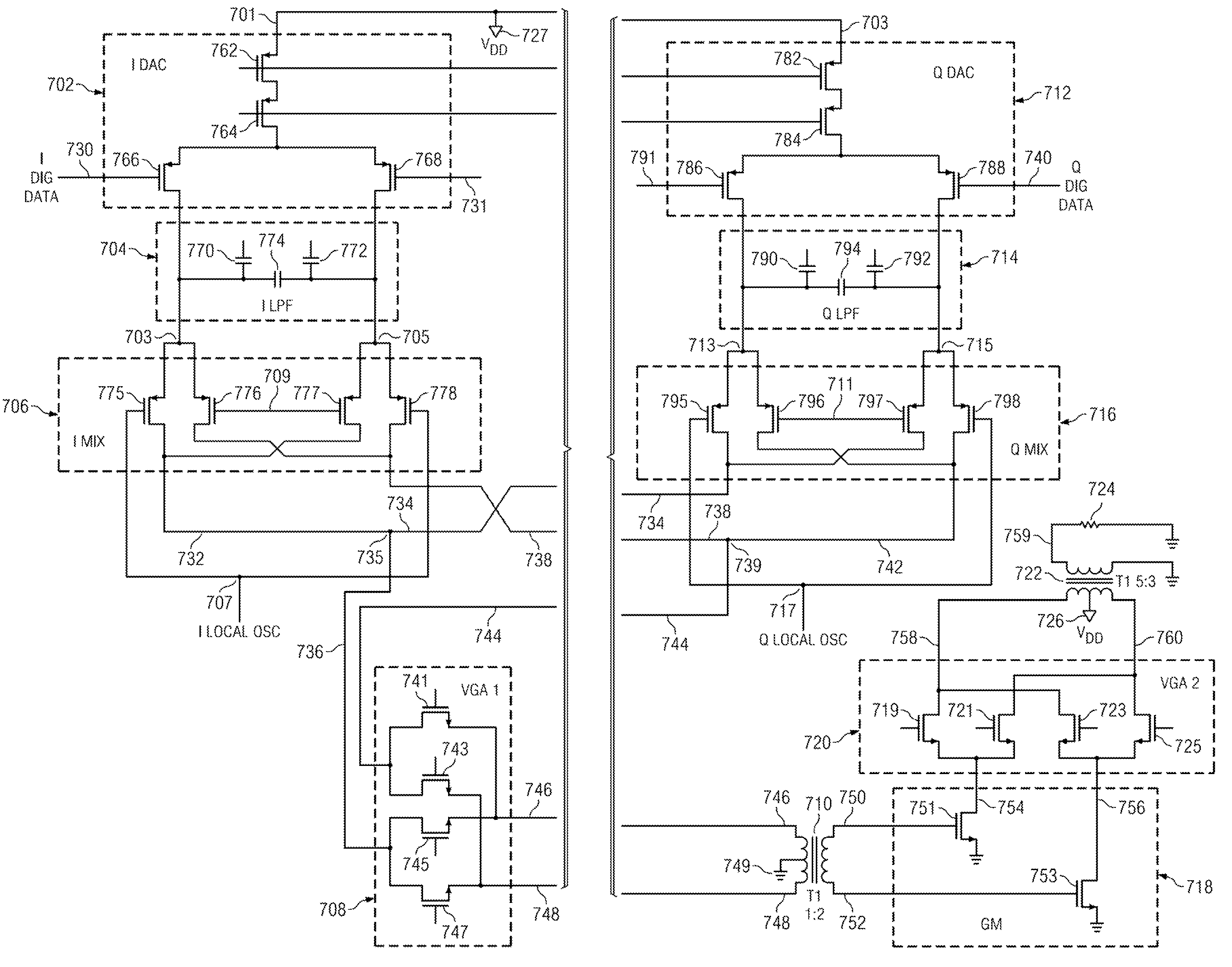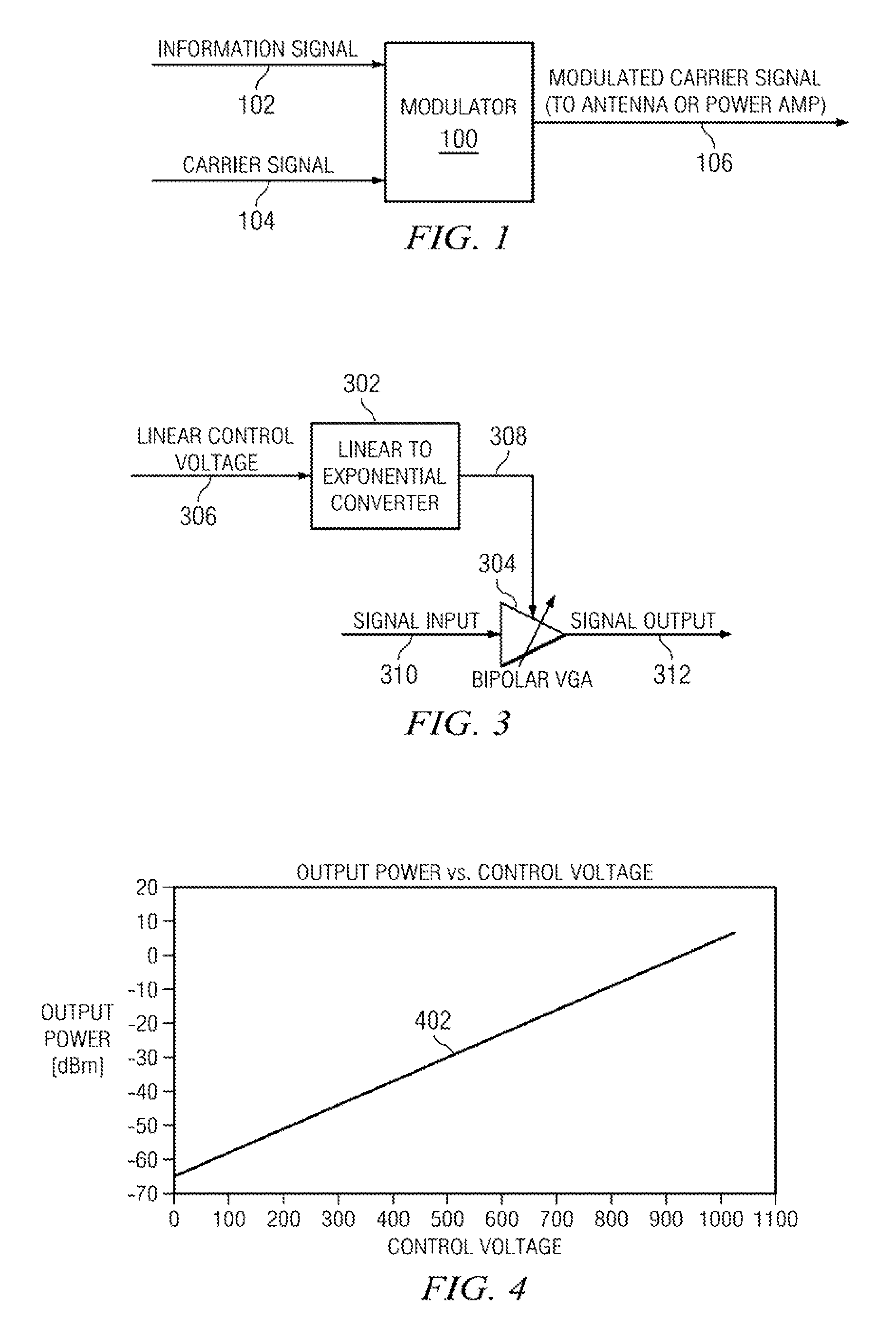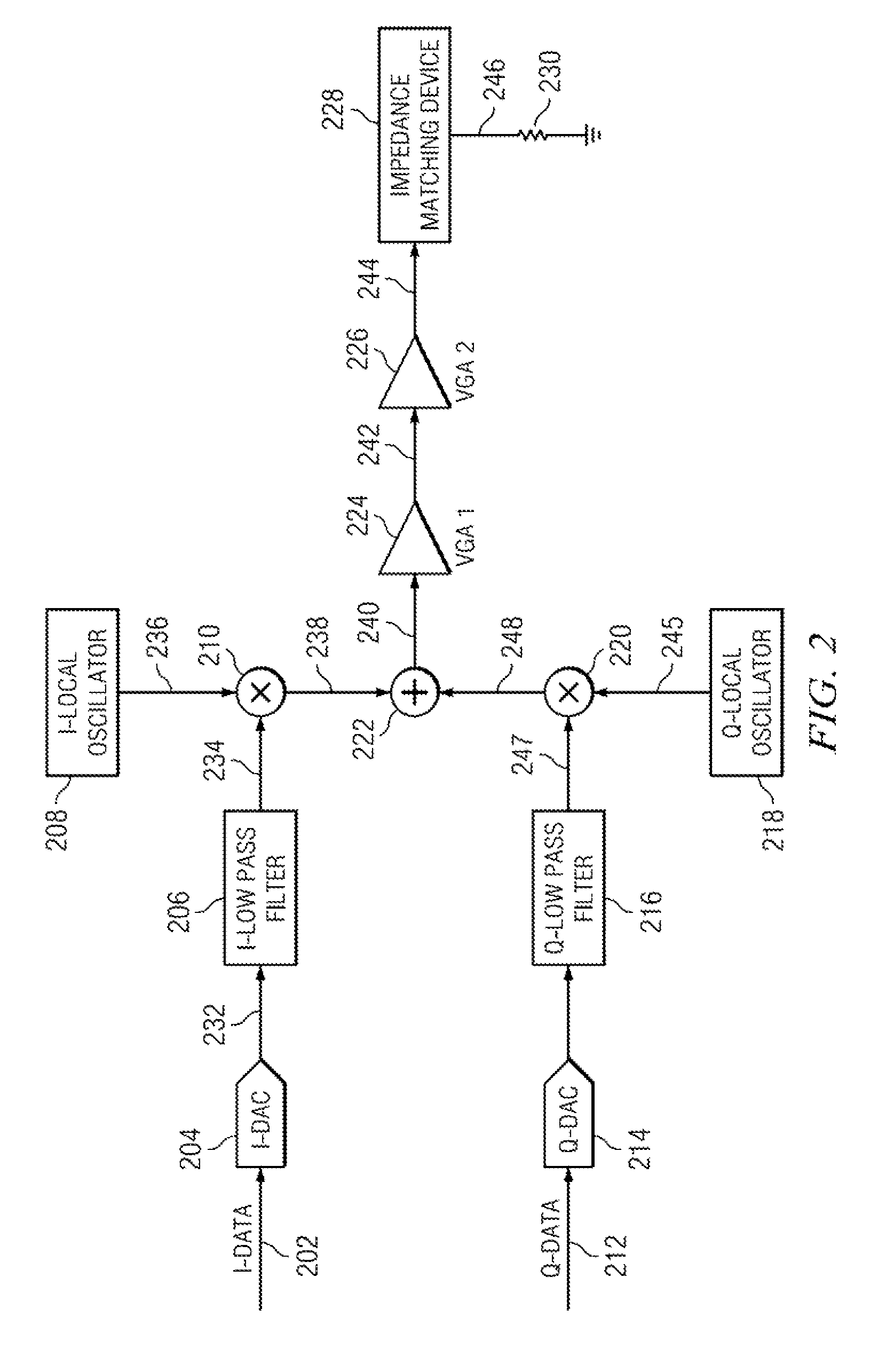Current canceling variable gain amplifier and transmitter using same
a technology of variable gain amplifier and amplifier, applied in the direction of digital transmission, transmission, volume compression/expansion without controlling loop, etc., can solve the problems of increasing the number of devices needed in the integrated circuit, undesirable nonlinearities of current-to-voltage and voltage-to-current conversion, undesirable noise, etc., and achieve the effect of eliminating undesirable results
- Summary
- Abstract
- Description
- Claims
- Application Information
AI Technical Summary
Benefits of technology
Problems solved by technology
Method used
Image
Examples
Embodiment Construction
In accordance with an aspect of the present invention, an example CMOS transmitter eliminates the problems caused by voltage-to-current and current-to-voltage conversions. The example CMOS transmitter also solves the problem of providing a linear relationship between power output in dBm and control voltage when bipolar transistors are not used to provide linear to exponential conversion of the control voltage.
The example CMOS transmitter avoids the problems caused by voltage-to-current and current-to-voltage conversion because the example CMOS transmitter has no such conversions. In accordance with an aspect of the present invention, all of the circuit portions within the modulator as well as the first amplifier in an example CMOS transmitter accept current as input and provide current as output. Accordingly, in an example CMOS transmitter in accordance with an aspect of the present invention, no voltage-to-current conversions and no current-to-voltage conversions are required betwe...
PUM
 Login to View More
Login to View More Abstract
Description
Claims
Application Information
 Login to View More
Login to View More - R&D
- Intellectual Property
- Life Sciences
- Materials
- Tech Scout
- Unparalleled Data Quality
- Higher Quality Content
- 60% Fewer Hallucinations
Browse by: Latest US Patents, China's latest patents, Technical Efficacy Thesaurus, Application Domain, Technology Topic, Popular Technical Reports.
© 2025 PatSnap. All rights reserved.Legal|Privacy policy|Modern Slavery Act Transparency Statement|Sitemap|About US| Contact US: help@patsnap.com



